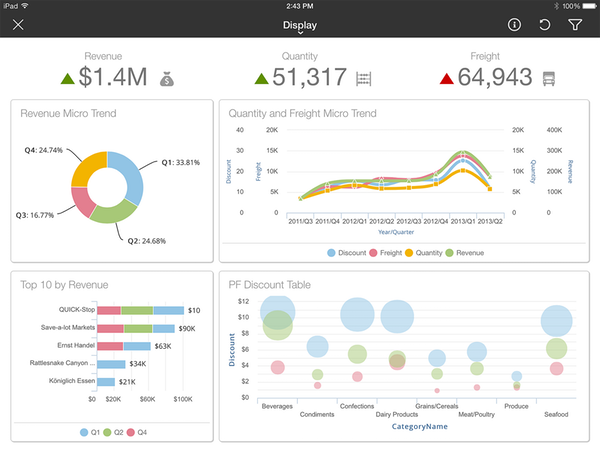7 Best Practices: Using Business Intelligence and Analytics

Business intelligence and analytics are the future of successful commerce. Only a few years ago, this was little more than a dream, but today vast amounts of information are available to those who know how to use text mining, predictive analytics, performance management, and other techniques to make sense of the ever-more enormous amounts of data available. Making sense of all this data is crucial—and best practices are key.
7 Best Practices For Using Business Intelligence and Analytics
1. Identify Your KPIs
Even if your data is trustworthy and relevant, it only works if you know how to apply it to key performance indicators. If you don't have specific, actionable KPIs in place, get them organized before you attempt to implement BI insights. Isolate your pain points and identify your goals. Then break things down into a manageable number of KPIs (seven is good) that allow you to focus your efforts, choose the right data sources, and make that data work for you.
2. Utilize Smart Data Gathering
Some of the data available to you is not worth your time to gather and process. Your strategy must be more nuanced than simply grabbing up everything in sight and throwing it at your analytics software. There's a computer programming adage worth remember here: GIGO.Garbage in, garbage out. Prioritize finding trustworthy data relevant to your needs and goals.
3. Know Your TCO and ROI
The TCO, or total cost of ownership, for your business analytics solutions may seem initially high. But don't turn your back on smart business intelligence and analytics help until you've calculated your return on investment. If the business intelligence you gather is going to accomplish key ROI objectives, it's worth the cost.
4. Source a Comprehensive Solution
Business intelligence can be gathered from any kind of file format you can name, from HTML to Excel, PDF files to Word documents. This is especially true if you're working with a comprehensive software solution like Birst. You can even access data from unstructured sources! Having the ability to compile and use information from so many sources is great, but not if you don't know what to do with it all. Choose a business intelligence consulting organization that can help you make sense of all the relevant data you have access to.
5. Keep the Team Informed
The most beautiful business intelligence report in the world won't do a thing for you if the right people aren't reading it. Identify which members of your leadership team need to stay apprised of all BI reports and keep them in the loop and giving you their input.
6. Be Ready for Change
Change is a constant, and, as they say, a battle plan never survives contact with the enemy. Disruptions in the market and changing political winds can changeyourrequirements in a matter of weeks. Your BI deployment should anticipate these possibilities. You must act on the best data you have available, but you must also remain nimble enough to change things up when necessary.
7. Don't Neglect Training
Your business intelligence projects will only succeed if everyone involved knows how to use BI reports and insights in a strategic way. Don't assume that a report, however clear and shiny, makes sense to everyone who looks at it. Rather than dumping onto everyone all at once, initiate strategic training sessions, so everyone gets practice in understanding and applying their new insights.
Get More From Your Data
BI and analytics offer enormous benefits, but only if you're positioned to make the most of them. To get all the benefits, invest in a business intelligence consulting organization partner who can enhance your reporting and make it work better for you. Visit ECS Reporting Solutions today to learn more about our services and to schedule a FREE consultation.


